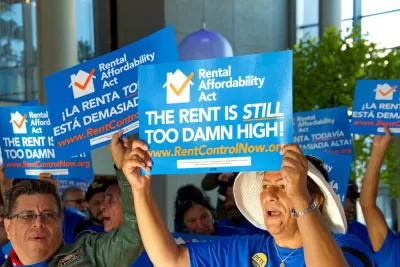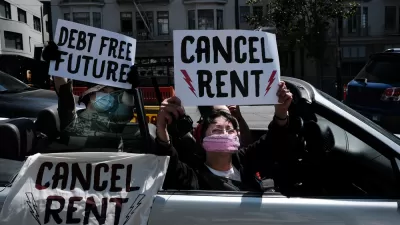"This is not about reward and punishment … It’s about speeding up effective relief for families in need of housing security and eviction protection."

It’s been nearly a year since Congress passed $25 billion for the first round of Emergency Rental Assistance (ERA1) and seven months since it allocated another $21.6 billion in the American Rescue Plan Act (ERA2). In the eyes of the Department of the Treasury, that’s plenty of time for states and cities to get successful emergency rent relief programs up and running. But come November, the Treasury department is planning on taking that money back from localities that haven’t done a good job getting rent relief out.
The federal rent relief effort has been much maligned for its painfully slow pace getting money into the hands of desperate renters. By July, only 11 percent of the $46.7 billion in available rental relief had been spent, because state and local officials struggled to create new rent relief programs from scratch, hire staff to process applications, get landlords to participate, among other snags. In the months since, distribution has accelerated, thanks in part to a push from Treasury for adjustments that reduce barriers—things like allowing renters to self-attest that they need the funds, reducing the amount of paperwork in applications, and partnering with community-based organizations to get the word out.
Still, as of late-October, states have spent or committed to spending only about 48 percent of the $25 billion available in ERA1 funds.
But that 48 percent belies the wildly disparate performance of the best and worst state and local rent relief programs around the country. The New York State rent relief program has paid out and approved payment of 100 percent of its ERA1 funds. Connecticut has spent and promised 95 percent of its ERA1 funds. Texas and Illinois are at 83 percent and 79 percent, respectively. On the other side of the coin, the Dakotas, Arkansas, Tennessee, and Nebraska are among the worst performers, having spent and obligated single-digit percentages of their ERA money. There are similar gaps between the best and worst city and state rent relief programs.
With some $15 billion left to distribute from the first round of ERA and another $21.6 billion in ERA2 available, the feds are now working to ensure that money isn’t languishing in states and cities that have shown they’re unable or unwilling to quickly help renters. On Oct. 15, Treasury began requiring low-performing programs to submit improvement plans that show how they’ll speed up distribution. For the truly dismal programs, Treasury will start recapturing and redistributing rent relief funds in November.
“This is not about reward and punishment,” said White House American Rescue Plan Coordinator Gene Sperling during a September webinar put on by the National Low Income Housing Coalition (NLIHC). “It’s about speeding up effective relief for families in need of housing security and eviction protection.”
Improvement for Some; Lost Funds for Others
For the purposes of ERA recapture and redistribution, Treasury divides rent relief programs into three buckets: those that have spent or committed more than ...
FULL STORY: As Rent Relief Efforts Drag on, Treasury is Redistributing Funds

Alabama: Trump Terminates Settlements for Black Communities Harmed By Raw Sewage
Trump deemed the landmark civil rights agreement “illegal DEI and environmental justice policy.”

Planetizen Federal Action Tracker
A weekly monitor of how Trump’s orders and actions are impacting planners and planning in America.

The 120 Year Old Tiny Home Villages That Sheltered San Francisco’s Earthquake Refugees
More than a century ago, San Francisco mobilized to house thousands of residents displaced by the 1906 earthquake. Could their strategy offer a model for the present?

In Both Crashes and Crime, Public Transportation is Far Safer than Driving
Contrary to popular assumptions, public transportation has far lower crash and crime rates than automobile travel. For safer communities, improve and encourage transit travel.

Report: Zoning Reforms Should Complement Nashville’s Ambitious Transit Plan
Without reform, restrictive zoning codes will limit the impact of the city’s planned transit expansion and could exclude some of the residents who depend on transit the most.

Judge Orders Release of Frozen IRA, IIJA Funding
The decision is a victory for environmental groups who charged that freezing funds for critical infrastructure and disaster response programs caused “real and irreparable harm” to communities.
Urban Design for Planners 1: Software Tools
This six-course series explores essential urban design concepts using open source software and equips planners with the tools they need to participate fully in the urban design process.
Planning for Universal Design
Learn the tools for implementing Universal Design in planning regulations.
Clanton & Associates, Inc.
Jessamine County Fiscal Court
Institute for Housing and Urban Development Studies (IHS)
City of Grandview
Harvard GSD Executive Education
Toledo-Lucas County Plan Commissions
Salt Lake City
NYU Wagner Graduate School of Public Service





























